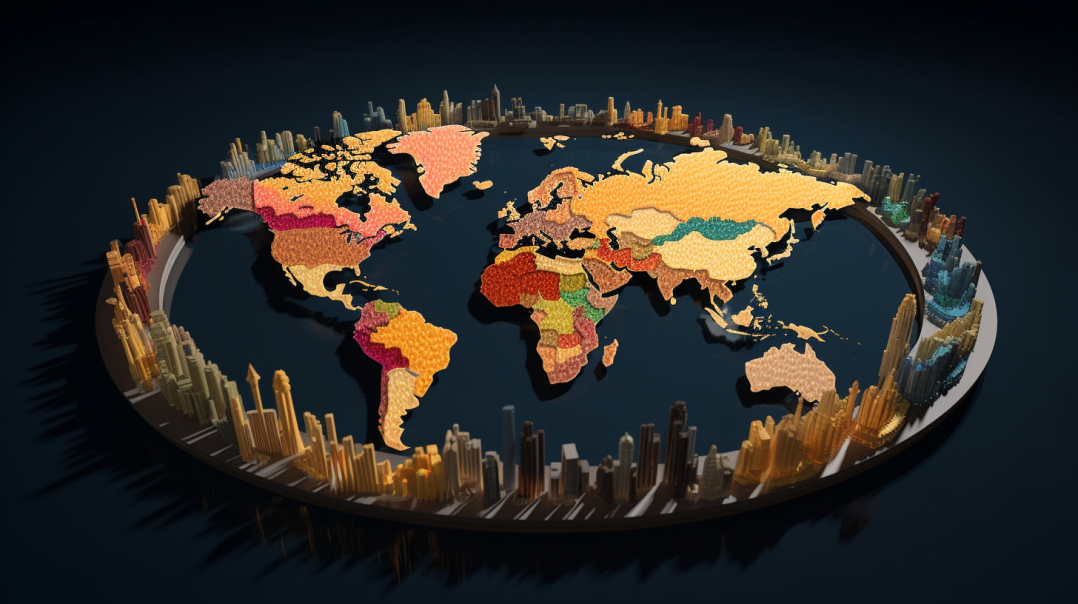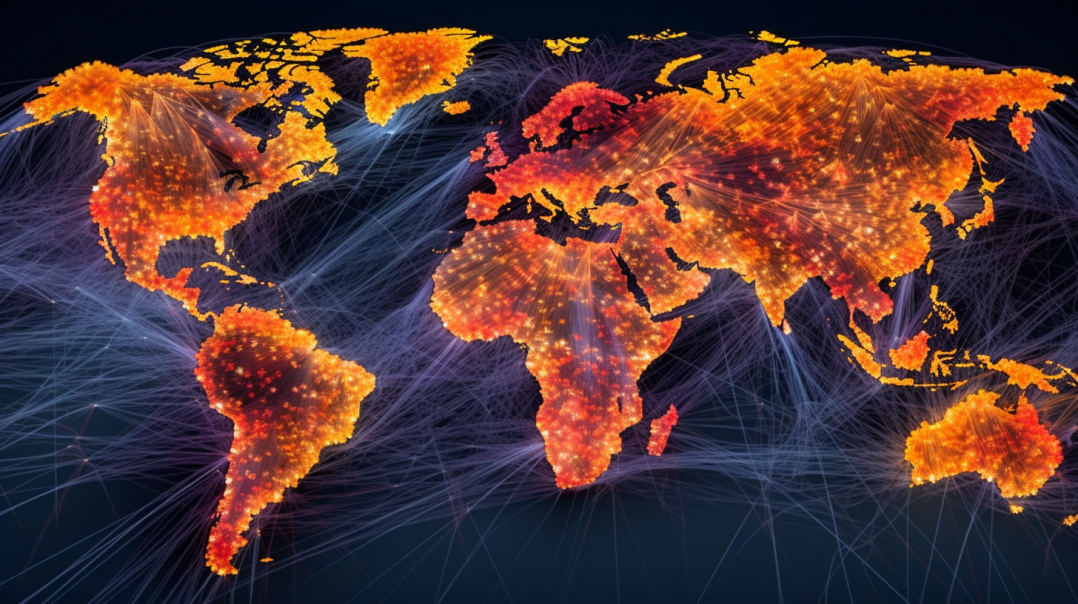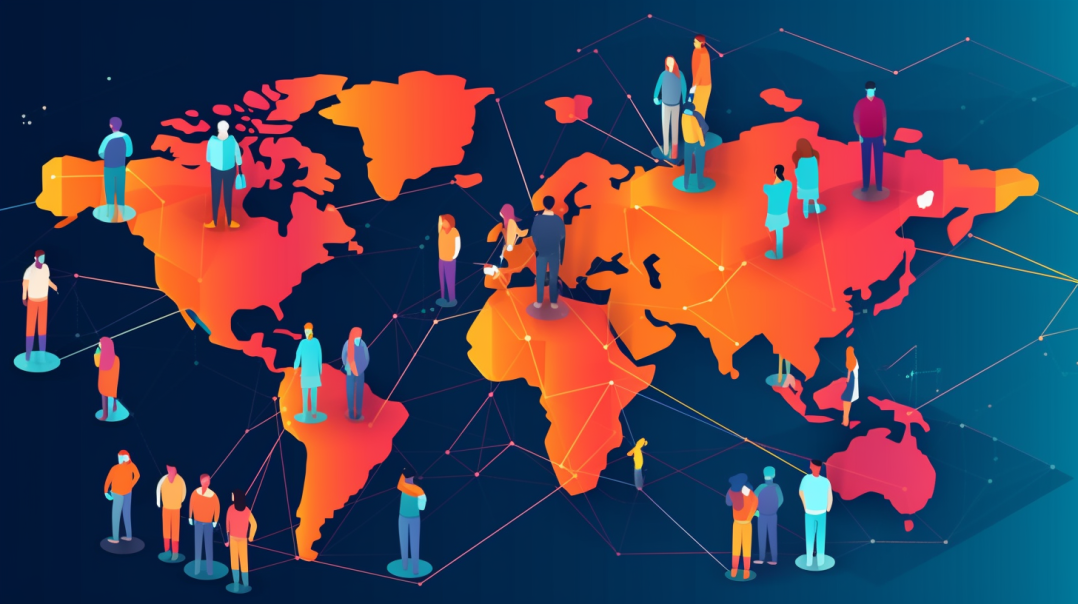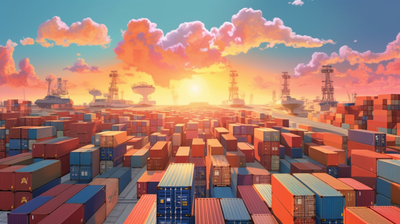Peter Zeihan's Geopolitical Insights: Unraveling the Tapestry of Economic Models, Demographics, and Global Partnerships
In contemplating the intricate tapestry of geopolitical and socio-economic dynamics that unfold before our discerning gaze, we cannot help but perceive specific salient threads weaving through the fabric of our collective consciousness. It is an intellectual endeavour that requires a nuanced understanding of historical antecedents, a keen awareness of present realities, and a speculative vision of potential futures. In the spirit of intellectual inquiry, let us embark on a philosophical exploration, drawing inspiration from the rich tapestry of classical thought.
At the heart of our analysis lies a recognition of the inherent interconnectedness between economic models and geopolitical events. For example, the German economic model, an epitome of industrial prowess and efficiency, seemingly stands poised to undergo a transformative outcome in this decade, entirely independent of the tumultuous Ukraine conflict. This realization evokes a sense of prescience as if we have always harboured an implicit understanding of this forthcoming paradigm shift. Likewise, our awareness extends to the Chinese landscape, where the spectre of an unprecedented aging society looms large, even before data revisions come into play.

In contemplating these global phenomena, we discern that the fate of nations such as France and New Zealand, with their relatively normal demographic structures, assumes paramount significance. They stand as beacons of hope amidst a sea of demographic aberrations. Yet, even within this small cohort, France guards its demographic prowess with enigmatic secrecy. Although endowed with a sparse population, New Zealand assumes a unique vantage point in our analysis. In these select few countries, we find a semblance of equilibrium that may hold the key to our collective future.
The delicate balance between high inflation and growth emerges as a pivotal choice that confronts us, precipitating far-reaching consequences for the intricate web of global supply chains. Our reflections beckon us to contemplate a vision wherein supply chains become local, simpler, and more amenable to the employment of local labour, heralding a greener and more responsive economic landscape impervious to international pressures. Conversely, embracing high inflation could herald an era of scarcity as the flow of goods becomes increasingly tenuous and reliant on external sources.

Mexico is a veritable wellspring of materials for our industrial endeavours. Moreover, its trajectory exhibits a fascinating deviation from historical patterns, wherein a delayed onset of urbanization and declining birth rates punctuate a unique demographic landscape. As the birth rate plummets irrecoverably and negative migration to the United States persists, Mexico emerges as the last major nation to traverse this demographic path. Yet, paradoxically, its demographic composition ranks among the healthiest, not merely in the affluent world but also within its income strata, surpassing the demographies of Brazil, Turkey, and India. Moreover, should this aging trend persist, Mexico may beat the average American in age by the mid-21st century, a prospect that bears further scrutiny as we gaze upon the temporal horizon.
Aligned with Mexico's evolution, we espouse the notion of forging partnerships with nations that possess complementary attributes to cultivate a system driven by financial prowess and skilled labour. As we venture into manufacturing, supply chains, and transportation systems, we contemplate the symbiotic relationship between our nation and Mexico, yearning for a low-cost, low-wage partner. The juxtaposition of Mexico's labour productivity, which now surpasses Canada's, against the backdrop of its need for a partner resonates with a subtle irony that evokes a wry smile.
In contemplating the integration of Mexico into this system, questions arise regarding the country's stability, particularly in light of external actors such as cartels that permeate its landscape. Indeed, these external forces present formidable challenges when envisioning the establishment of manufacturing plants and resilient supply chains. However, we dare not dismiss the potential for Mexico's entry into this interconnected framework as a societal transformation and economic stability catalyst. Nevertheless, such challenges must be met with a tempered resolve, mindful of the intricate risks permeating the geopolitical landscape.

Our contemplations invite us to consider a paradigm shift, wherein the scale of our operations may diminish, engendering a renewed emphasis on local and regional collaborations. For example, negotiating trade agreements with countries like China or the European Union, whose global presence looms large, presents a complex and arduous endeavour. In contrast, integration with countries such as Colombia or a future rapprochement with Cuba might herald a more straightforward path, allowing for more streamlined transportation systems and trade negotiations between near peers. The essence of our vision lies in a pragmatic and adaptive approach, wherein small-scale container vessels suffice, eschewing the need for massive logistical apparatus.
In conclusion, our journey of intellectual exploration leads us to contemplate the tapestry of economic models, demographic shifts, and geopolitical realignments that permeate our world. We discern the interconnectedness of these threads, weaving a narrative of change, uncertainty, and potential prosperity.
Daniel's Take:
- The German economic model is poised for transformation, independent of the Ukraine conflict, inviting reflection on the intrinsic relationship between financial systems and geopolitical events.
- France and New Zealand are rare exemplars of semi-normal demographic structures, holding insights into the equilibrium we seek.
- The choice between high inflation and growth forces us to weigh the advantages of localized supply chains and greener practices against the spectre of scarcity and dependence on external sources.
- Mexico's unique demographic trajectory and aging population present opportunities for collaboration, especially as it is pivotal in supplying materials for industrial pursuits.
- The integration of Mexico, accompanied by necessary stability and security considerations, can pave the way for resilient supply chains and mutually beneficial partnerships.
- The transition toward smaller-scale, regional collaborations offers a streamlined alternative to negotiating with global powers, fostering efficiency and reducing logistical complexities.
Cameron's Take:
One of the geopolitical trends that I observed and have seen others talk about is a return to the world of World War I. Much of the regionalism we are unfamiliar with was commonplace among the great empires before World War I. The European powers had carved up the planet by 1914, and 7 powerful empires ruled almost everything except the United States, China, Japan, Mexico, and parts of South America. Eurasia, Africa, the Near East, and Southeast Asia were all under European/Ottoman control except for the examples mentioned. Geopolitical players were limited. The US had yet to become a great power, although the Spanish-American War had bolstered its international reputation. South America was mostly impoverished and, outside of Argentina and Brazil, weren't significant players on the global scene. China was in decline, and Japan had just opened to the world in 1911. This environment ledleads to much of the localized and regionalized politics and trade we are beginning to observe again. For North America, this presents an opportunity.
If Canada, the United States, and Mexico could join together, these three countries could form an economic powerhouse that would be unstoppable. The combined economies of these nations would rival the EU in breadth, depth, and scope. Canada can provide endless raw materials, Mexico the labour and the US the expertise to make it all work together. Globally, we are already seeing smaller nations look to their neighbours to build better trade ties closer to home. The time of doing deals over thousands of miles is likely to be reduced in favour of working with people within 500-1000 miles of the nation concerned. The one notable exception would be the European Union with its single-market system. This is where the UK will begin to feel the pinch of Brexit and not being part of the common market anymore. It will need to build trade ties with the EU, but not being part of the common market will make British goods more expensive and reduce exports.
The shifts in the German economic model will have implications throughout the EU, but politically, the change in power between Berlin and Paris is already beginning to widen. In a world where military presence will become necessary, Germany's lack of an army sector is a glaring problem that France or the UK does not suffer. If the UK had not left the EU, London could be Europe's new center of power. Instead, things are shifting toward France and away from Germany.
Ultimately, this is an area where nations will have to make some tough choices, especially on energy and climate regulations. To have the goods, services, and lifestyle people have become accustomed to, countries, companies, and policymakers must make some choices moving forward. This will likely mean some abandonment of environmental regulation in favour of supply chain security; how politically popular that will be remains to be seen.
Speculating on the Good (καλός) that emerges from this intellectual journey:
We glimpse the potential for a future marked by enhanced economic resilience, sustainability, and fruitful partnerships. By embracing these opportunities for interconnectedness and adaptation, we may navigate the complexities of our world, forging a future that nurtures both human flourishing and global prosperity.






